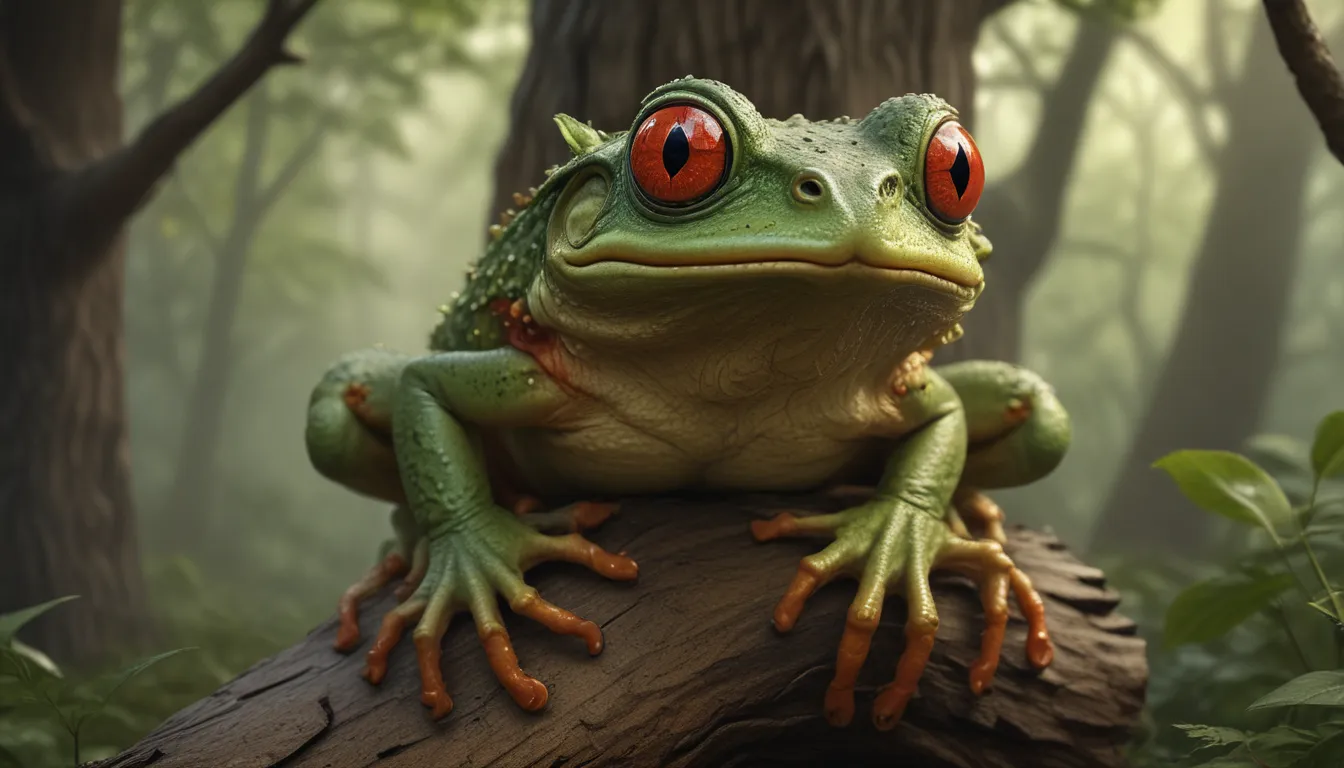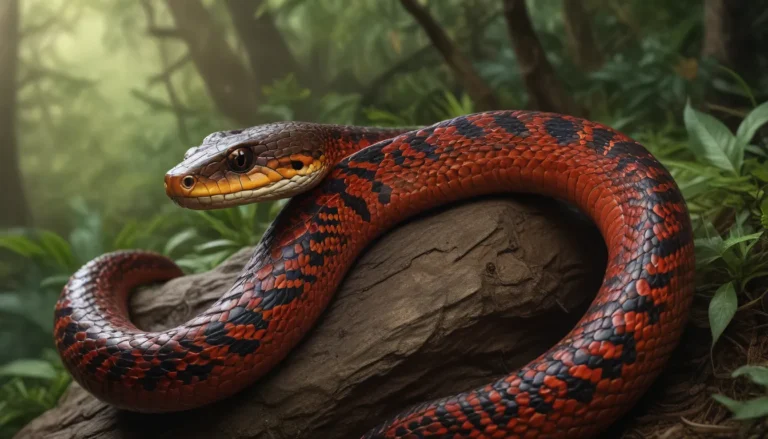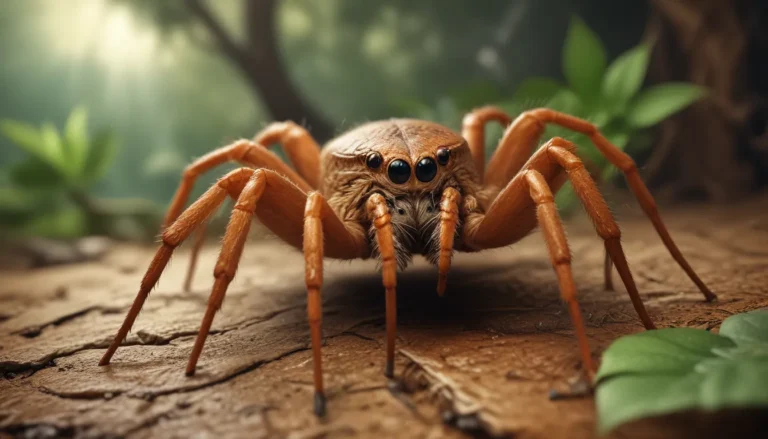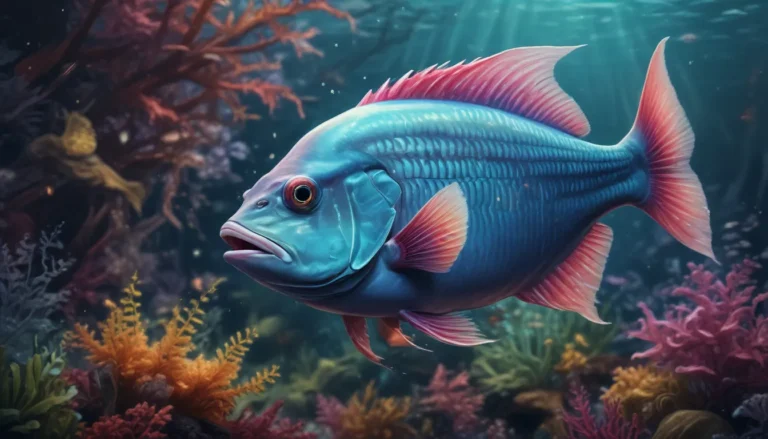The pictures we use in our articles might not show exactly what the words say. We choose these pictures to make you interested in reading more. The pictures work together with the words but don’t take their place. The words still tell you the important facts.
The Red-Eyed Tree Frog, scientifically known as Agalychnis callidryas, is a captivating creature that enchants nature enthusiasts and animal lovers with its vibrant appearance and unique behaviors. This iconic amphibian, native to the rainforests of Central America, symbolizes biodiversity and ecological richness. In this article, we will embark on an intriguing journey to explore 26 fascinating facts about the Red-Eyed Tree Frog, shedding light on its physical attributes, behaviors, and ecological significance. Join us as we delve into the extraordinary features that make the Red-Eyed Tree Frog a beloved symbol of the tropical rainforests it inhabits.
Key Takeaways:
- The Red-Eyed Tree Frog is a nocturnal master of camouflage, using its vibrant colors and unique adaptations to thrive in the rainforest and evade predators.
- These captivating frogs play a vital role in the rainforest ecosystem, inspiring conservation efforts and serving as ambassadors of the rich biodiversity of the natural world.
The Red-Eyed Tree Frog: A Master of Camouflage
The Red-Eyed Tree Frog, known for its striking appearance, is a fascinating inhabitant of the Central American rainforests. Let's uncover some intriguing facts about this remarkable amphibian.
They Are Nocturnal Creatures
Red-eyed tree frogs are nocturnal beings, primarily active at night. During the day, they seek shelter in trees, blending perfectly with their surroundings to avoid predators.
Their Vivid Colors Serve a Purpose
The vibrant colors of the red-eyed tree frog serve as a defense mechanism. When threatened, they reveal their bright red eyes and striking body colors to startle predators and facilitate a quick escape.
They Are Expert Jumpers
These agile frogs are exceptional jumpers, thanks to their long legs and strong muscles. They can leap long distances between branches in the rainforest canopy.
Red-Eyed Tree Frogs Have Suction Cup Toes
Equipped with suction cup toes, these frogs can grip onto leaves and branches without slipping. This unique adaptation enables them to move swiftly and securely on various surfaces.
They Have a Unique Way of Sleeping
During the day, red-eyed tree frogs tuck their bright limbs and close their red eyes, camouflaging themselves as green blobs to avoid detection while resting.
Red-Eyed Tree Frogs Are Vocal Creatures
These frogs are not just visually stunning; they also possess a distinctive call. Males produce loud, high-pitched sounds to attract females and establish territory in the rainforest.
They Lay Their Eggs in Unique Locations
Female red-eyed tree frogs lay eggs on the underside of leaves overhanging bodies of water. Once hatched, tadpoles drop into the water below, undergoing development into adult frogs.
They Undergo a Fascinating Transformation
The life cycle of a red-eyed tree frog—from egg to tadpole to adult—is a marvel of nature, showcasing their remarkable ability to adapt to their environment.
Red-Eyed Tree Frogs Are Relatively Small
Adult female red-eyed tree frogs measure around 2.5 to 3 inches in length, slightly larger than males, who measure between 1.5 to 2 inches.
They Are Endowed with Sensitive Skin
The highly sensitive and permeable skin of red-eyed tree frogs allows them to absorb moisture and oxygen directly through their skin, essential for survival in the humid rainforest.
Red-Eyed Tree Frogs Are Agile Hunters
Feeding on insects like crickets, moths, and flies, these frogs showcase keen eyesight and rapid reflexes, making them adept hunters in the dense rainforest environment.
They Have a Unique Swallowing Technique
Red-eyed tree frogs use their eyes to aid in swallowing prey. By retracting their eyes into their heads, they push food down their throats, displaying a fascinating feeding behavior.
Red-Eyed Tree Frogs Are Highly Adaptable
These resilient creatures thrive in their rainforest habitat, demonstrating remarkable adaptability and a capacity to thrive in diverse environments.
They Play an Important Role in the Ecosystem
By controlling insect populations and serving as a food source for other creatures, red-eyed tree frogs contribute to the balance of their ecosystem, highlighting their vital role in the intricate web of life in the rainforest.
They Face Threats from Habitat Loss
Deforestation and human encroachment pose threats to the red-eyed tree frog's habitat. Conservation efforts are essential to protecting the delicate balance of their rainforest home.
Red-Eyed Tree Frogs Have a Unique Reproductive Strategy
From selecting egg-laying sites to caring for offspring, the reproductive behavior of these frogs is remarkable, a testament to their evolutionary success.
They Have Captivated the Hearts of Many
The mesmerizing appearance and behaviors of the red-eyed tree frog have made it a beloved symbol of rainforest conservation, featured in nature documentaries and educational programs.
Red-Eyed Tree Frogs: Icons of Conservation
Emblematic of conservation efforts, red-eyed tree frogs inspire people to protect the biodiversity of rainforests, emphasizing the importance of preserving their natural habitats.
They are Popular Among Wildlife Enthusiasts
Red-eyed tree frogs are favorites among wildlife enthusiasts and photographers, capturing attention with their stunning appearance and behaviors, making them sought-after subjects for nature photography.
They Are a Source of Inspiration
The adaptations and survival strategies of red-eyed tree frogs inspire scientific research and biomimicry, offering innovative solutions in various fields.
Thriving in Nature’s Creative Realm
Red-eyed tree frogs showcase nature's creativity, illustrating the diversity of life on Earth and the intricate adaptations that have evolved over millions of years.
A Reminder of Ecosystem Fragility
The presence of red-eyed tree frogs reminds us of the delicate balance of ecosystems and the necessity of preserving biodiversity for the well-being of our planet.
Igniting Wonder and Appreciation
Encountering red-eyed tree frogs in their natural habitat sparks wonder and appreciation for the beauty and complexity of the natural world, fostering a connection with the ecosystems they inhabit.
Red-Eyed Tree Frogs: Ambassadors of the Rainforest
Symbolizing biodiversity and ecological significance, red-eyed tree frogs represent the rich diversity of rainforest ecosystems, urging us to cherish and protect the natural wonders of our planet.
Conclusion
The red-eyed tree frog is a captivating marvel of nature, captivating enthusiasts with its appearance, behaviors, and ecological role. By understanding these 26 best facts about the red-eyed tree frog, we deepen our appreciation for the delicate balance of nature and the extraordinary diversity of life on our planet.
FAQs
What does the red-eyed tree frog eat?
The red-eyed tree frog primarily consumes insects such as crickets, flies, and moths, along with smaller frogs and invertebrates.
Where can the red-eyed tree frog be found in the wild?
Native to Central American rainforests, red-eyed tree frogs dwell in regions spanning Mexico, Costa Rica, Panama, and Nicaragua, often near rivers and ponds.
Empowering Your Curiosity
Our commitment to delivering engaging, trustworthy content is reflected in the wealth of diverse insights and information contributed by real users like you. Each fact on our site undergoes meticulous review by dedicated editors to ensure accuracy and reliability. Trust in our commitment to quality and authenticity as you explore and learn with us.






